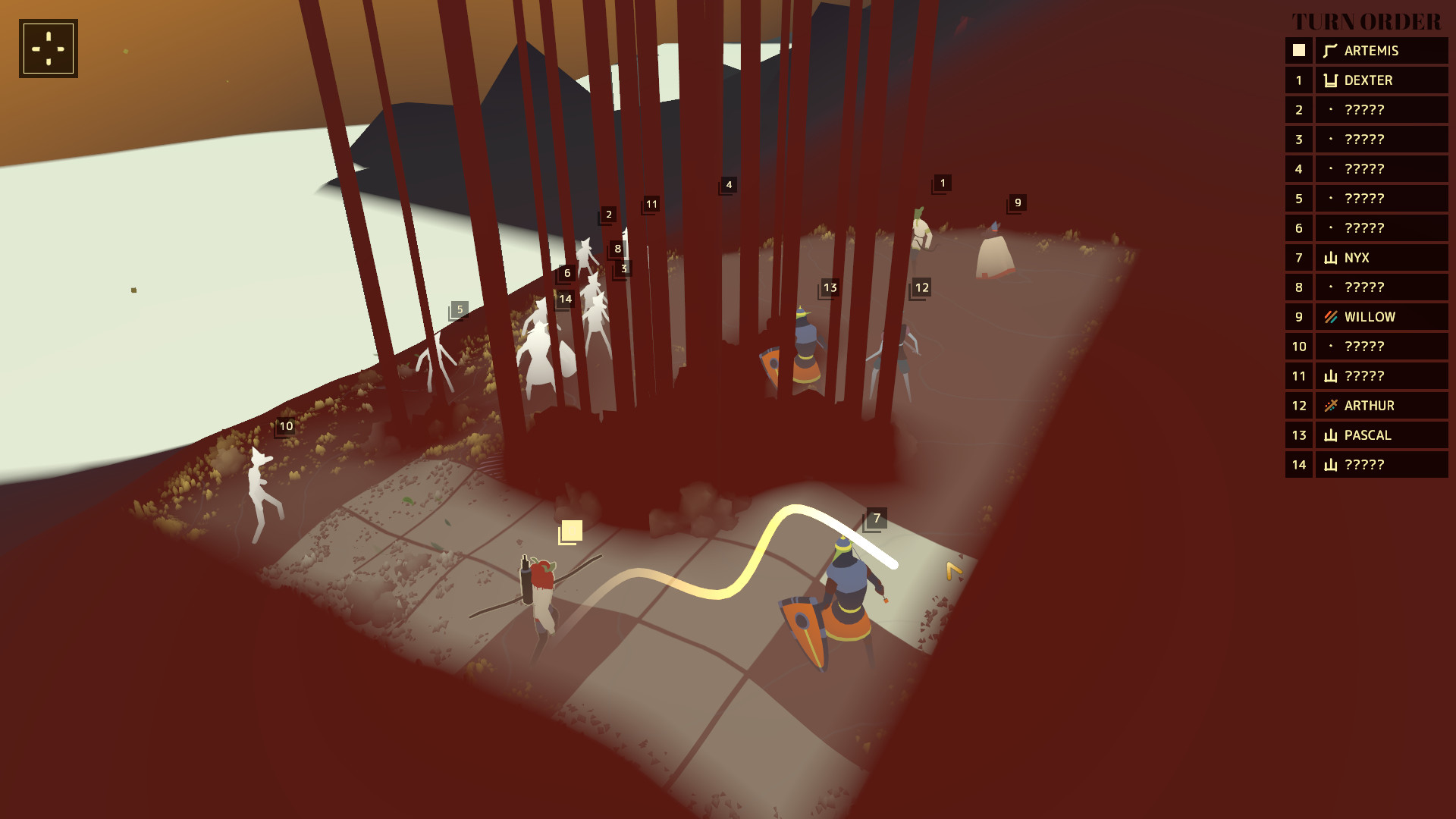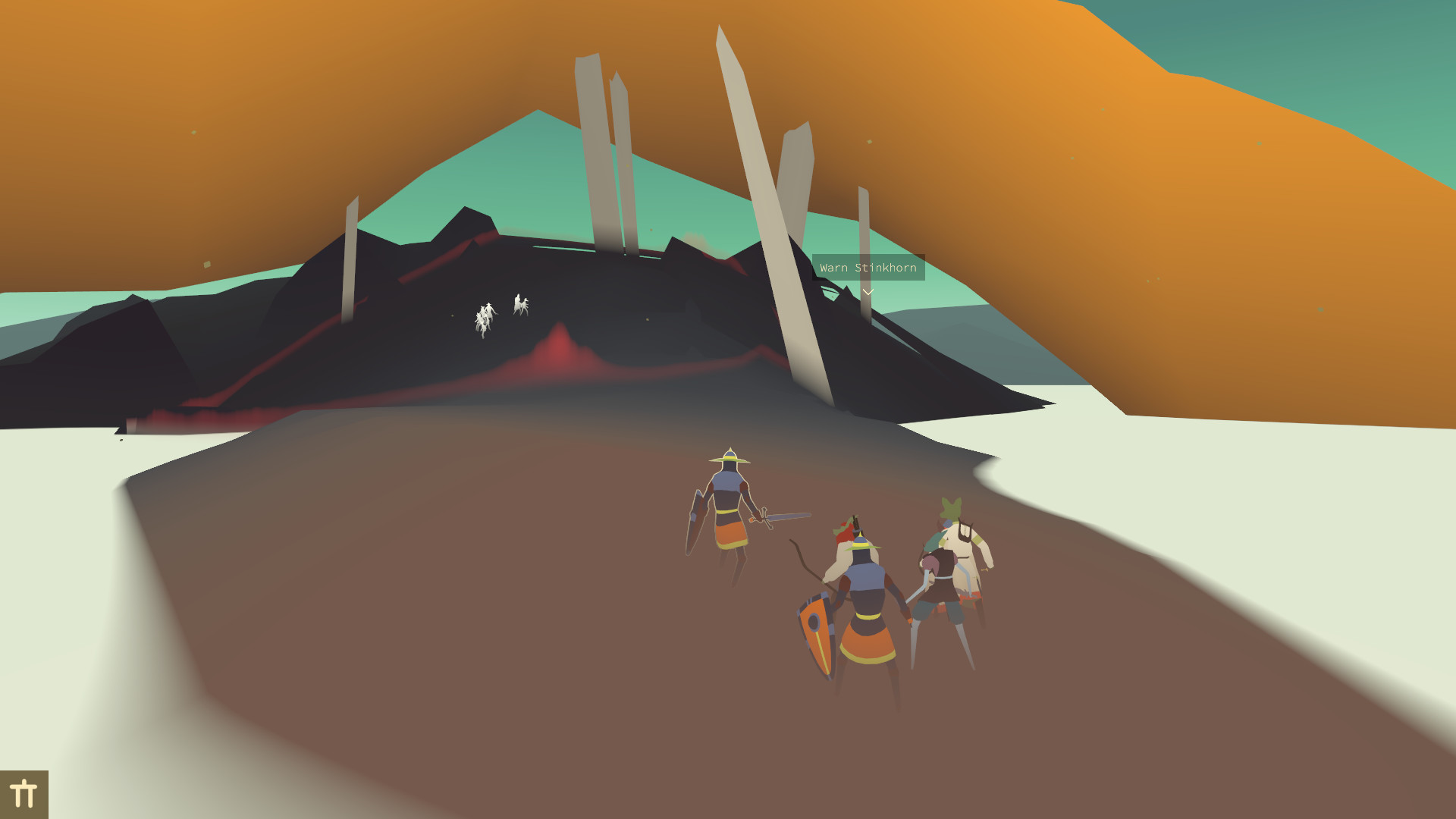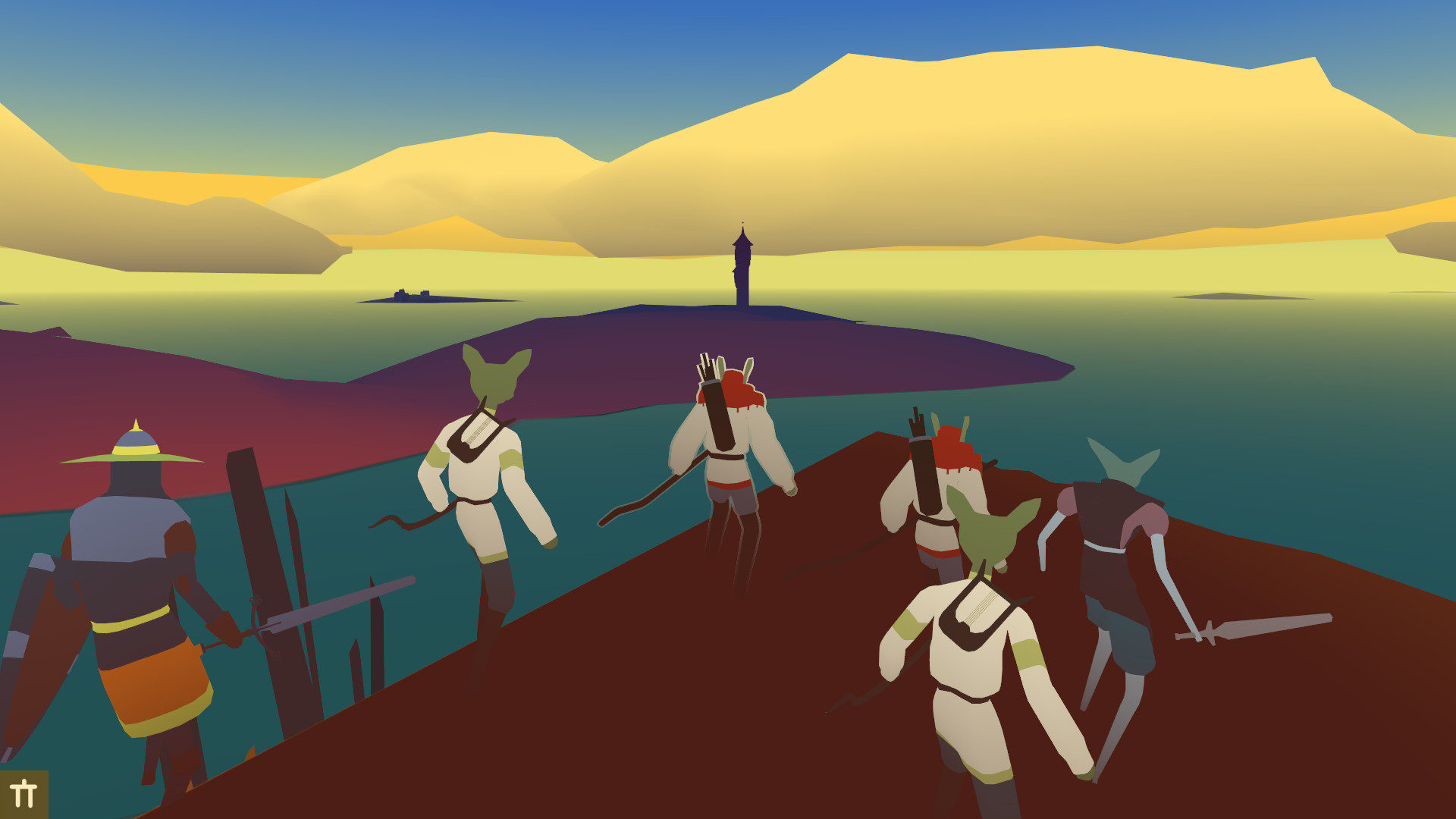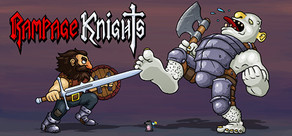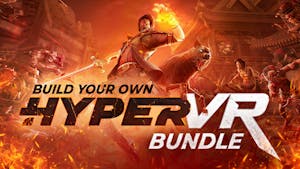For a generation, the terrible Fog - one vast, voiceless, and cruel spirit - has been eating the once-thick forests of the mainland. Now, with nowhere left to call home, and granted magic by the friendly spirits of the archipelago, one small party of would-be adventurers sets out. Find a way to save the many goblin towns of the rocky coast, discover the truth of the Fog, and, if possible, put an end to it.
Raise a ridge of stone to block the enemy's approach. Flick an ember into the brush where enemy archers hide, then push a swell of water to intercept the flames before they endanger your own side. Evolve your party into a well rounded squad to better control the wild complexity of nature, or specialize and hazard the risks.
Featuring:
For now this is a small window into a very large project. Make sure to wishlist and follow (here and elsewhere) so you see updates as more of the game becomes showable!
Raise a ridge of stone to block the enemy's approach. Flick an ember into the brush where enemy archers hide, then push a swell of water to intercept the flames before they endanger your own side. Evolve your party into a well rounded squad to better control the wild complexity of nature, or specialize and hazard the risks.
Featuring:
- vast open-world exploration
- highly interactive natural systems such as terrain height, soil moisture, plant growth, fluid flow, heat and fire
- 25+ goblin evolutions: shamans, druids, warlocks, wights, lavamancers, bog witches, knights, and more
For now this is a small window into a very large project. Make sure to wishlist and follow (here and elsewhere) so you see updates as more of the game becomes showable!
Design Notebook: Playful Traversal
But it isn't! It's central to what we're making, actually. Tenderfoot's a TRPG, sure, but it's also, deep, deep in its heart, a game about nature and place, exploration and adventure. One of the very first, guiding decisions in Tenderfoot's development was the decision to ditch the conventional map overworld and lean into a fully 3D one.
I went this direction for the same reason we did so with Eidolon , Tenderfoot's predecessor: perspective is an excellent design tool. We have this built in logic to The Way Vision Works that justifies having objects hard to decipher when far away but richly detailed when close up, and gives sensible logic for a smooth transition between. In a game about travel, exploration, and discovery, of COURSE we want the feeling of seeing something interesting but unclear to investigate from far off, making the long and intentional journey there, and then finding out what it is in full detail at the end, with the ability to look at any props from all angles, and physical access to any goods discovered.

One of the things we learned through the making of Eidolon was that in a game that spends a lot of time on navigation, the means of navigation become super important. We were so happy we leaned into physical maps, the compass, the binoculars, to give the player the experience of performing navigation themselves. Something we realized by the end of Eidolon's development, but never delivered on exactly, is that Eidolon is also significantly a game about the traversal of landscapes - and that part, which I thought of at the time as the 'micro-decisions' of play (do I go around that tree to the left or right), was mostly neglected, filled in by having collectibles scattered everywhere (I'll go left because I can pluck that mushroom to the left of the tree that way). But I always regretted not working in more playful traversal.
Something that stuck in my mind as especially brilliant in BotW was the way the horse would autopath along roads, giving you time to look around with your spyglass. The feeling of making progress along a journey while scoping out the area nearby was really wonderful, and not something most games afford. So I borrowed that design.

One of the first decisions on that front was to make open water safe, fast. Like with BotW's horse, the canoe in Tenderfoot picks up speed and maintains it. Like with the main roads in BotW, the water is a relatively safe zone, meant for rapid travel, combat-free.
In place of a scope, Tenderfoot has birds. On canoe trips, a player can take to the sky, surveying nearby islands or behind hills, finding places they might want to divert to later on.
And because of the functionality of the canoe, the map is cut into interesting route decisions: do we cross that relatively thin body of land to make a straight-shot to our destination, risking combat, or worse, becoming disoriented in the fog, or will it end up quicker and safer to take the long route around it in a boat? What can I see that I might encounter on that longer route? Maybe an island I haven't explored yet, or even some distant boxy shapes that might be a structure of some sort.
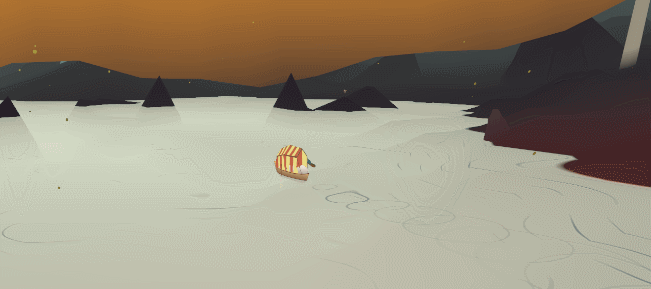
Something I loved from BotW is the natural narrative cycle of struggling up a steep cliff followed by the release and freedom of gliding down. We're mirroring that somewhat with our slide system. A player struggles up a hill, moving slowly and having to be very careful not to be seen by any roving enemies. And at the top, they crest to see the other side, and then plummet down at high speeds to return to the freedom and safety of the open water.
The result of adding crouch-sliding to Tenderfoot has been tremendous. It feels playful and joyful. It creates small natural cycles that do a Lot for the pacing of exploration.

I've been saying this since BotW, but I think that for a certain branch of 'walking sim' descendents, the sort interested in evoking the feelings of travel across a landscape of some kind, this is going to be an area of design worth delving deeply into over the next 5-10 years. It's been so interesting seeing the way DS leans a completely different direction from BotW, and I can see so much room in all directions around. It's an exciting time to be working in games, for sure.
Until next time! Thanks for following along while we make this unbelievably grand and complex thing.
- Badru
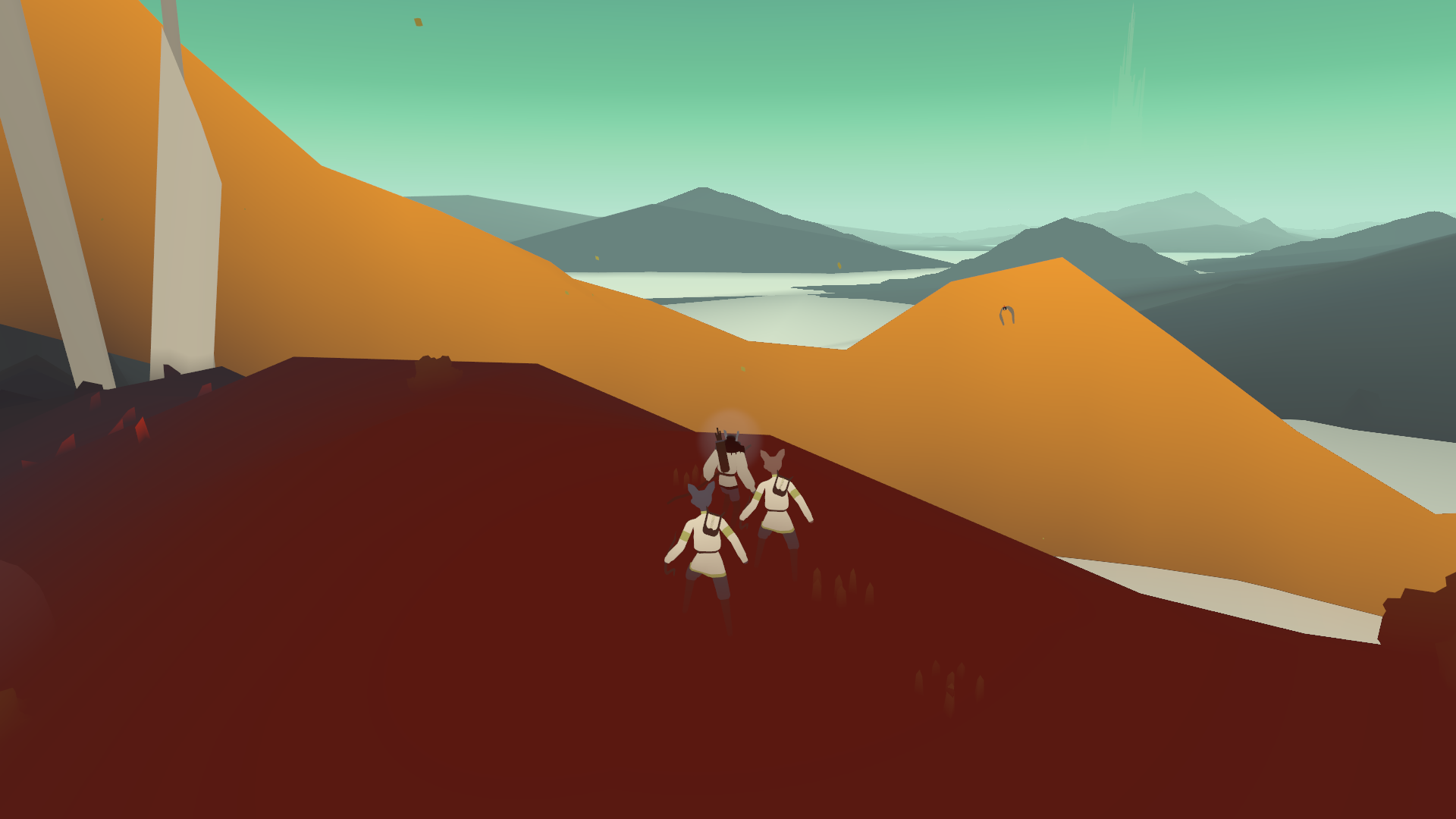
An Exploratory 3D Overworld for a Strategy Game?
This is probably the thing I've posted most actively about post-Foreverlands, on Twitter anyway, because I find it really cheesy and annoying and fun, in a community of other developers, to be spending time on a system that feels completely out of genre and overscoped for the game we're making.But it isn't! It's central to what we're making, actually. Tenderfoot's a TRPG, sure, but it's also, deep, deep in its heart, a game about nature and place, exploration and adventure. One of the very first, guiding decisions in Tenderfoot's development was the decision to ditch the conventional map overworld and lean into a fully 3D one.
I went this direction for the same reason we did so with Eidolon , Tenderfoot's predecessor: perspective is an excellent design tool. We have this built in logic to The Way Vision Works that justifies having objects hard to decipher when far away but richly detailed when close up, and gives sensible logic for a smooth transition between. In a game about travel, exploration, and discovery, of COURSE we want the feeling of seeing something interesting but unclear to investigate from far off, making the long and intentional journey there, and then finding out what it is in full detail at the end, with the ability to look at any props from all angles, and physical access to any goods discovered.

One of the things we learned through the making of Eidolon was that in a game that spends a lot of time on navigation, the means of navigation become super important. We were so happy we leaned into physical maps, the compass, the binoculars, to give the player the experience of performing navigation themselves. Something we realized by the end of Eidolon's development, but never delivered on exactly, is that Eidolon is also significantly a game about the traversal of landscapes - and that part, which I thought of at the time as the 'micro-decisions' of play (do I go around that tree to the left or right), was mostly neglected, filled in by having collectibles scattered everywhere (I'll go left because I can pluck that mushroom to the left of the tree that way). But I always regretted not working in more playful traversal.
Breath of the Wild & Meaningful Terrain
I usually end up being a contrarian jerk when it comes to big budget corp-games, but I actually thought Breath of the Wild was fabulous in a lot of ways, especially when it came to exploration and world traversal. Especially traversal. With climbing and gliding, elevation change becomes so important, and the decision about how to get from one place to the next is filled with interesting little decisions, tiny arcs of narrative build and satisfaction.Something that stuck in my mind as especially brilliant in BotW was the way the horse would autopath along roads, giving you time to look around with your spyglass. The feeling of making progress along a journey while scoping out the area nearby was really wonderful, and not something most games afford. So I borrowed that design.

The Open Water
Looking at Tenderfoot with Eidolon behind me, it felt important to suffuse the landscape with gameplay meaning, to make it so whatever visual/logical/narrative changes there are across the surface of the world, those things have meaning to the gameplay system of traversal.One of the first decisions on that front was to make open water safe, fast. Like with BotW's horse, the canoe in Tenderfoot picks up speed and maintains it. Like with the main roads in BotW, the water is a relatively safe zone, meant for rapid travel, combat-free.
In place of a scope, Tenderfoot has birds. On canoe trips, a player can take to the sky, surveying nearby islands or behind hills, finding places they might want to divert to later on.
And because of the functionality of the canoe, the map is cut into interesting route decisions: do we cross that relatively thin body of land to make a straight-shot to our destination, risking combat, or worse, becoming disoriented in the fog, or will it end up quicker and safer to take the long route around it in a boat? What can I see that I might encounter on that longer route? Maybe an island I haven't explored yet, or even some distant boxy shapes that might be a structure of some sort.

The Crouch-slide
One result of the canoe's functionality in Tenderfoot is that going uphill means going further from the safety of sea-level.Something I loved from BotW is the natural narrative cycle of struggling up a steep cliff followed by the release and freedom of gliding down. We're mirroring that somewhat with our slide system. A player struggles up a hill, moving slowly and having to be very careful not to be seen by any roving enemies. And at the top, they crest to see the other side, and then plummet down at high speeds to return to the freedom and safety of the open water.
The result of adding crouch-sliding to Tenderfoot has been tremendous. It feels playful and joyful. It creates small natural cycles that do a Lot for the pacing of exploration.

A Final Note: The State of the Industry
Death Stranding is a game I'm playing currently that is absolutely excelling at playing with these sorts of systems, that turn the shape and texture of the landscape into meaningful interactables for the whole play experience, rather than just for the eye.I've been saying this since BotW, but I think that for a certain branch of 'walking sim' descendents, the sort interested in evoking the feelings of travel across a landscape of some kind, this is going to be an area of design worth delving deeply into over the next 5-10 years. It's been so interesting seeing the way DS leans a completely different direction from BotW, and I can see so much room in all directions around. It's an exciting time to be working in games, for sure.
Until next time! Thanks for following along while we make this unbelievably grand and complex thing.
- Badru
[ 2019-11-20 00:56:25 CET ] [Original Post]
Minimum Setup
- OS: Ubuntu 16.04+
- Processor: 2.5 GHzMemory: 2 GB RAM
- Memory: 2 GB RAM
- Graphics: Dedicated GPU with SM4+
- Storage: 1 GB available space
GAMEBILLET
[ 6338 ]
FANATICAL
[ 5853 ]
GAMERSGATE
[ 1933 ]
MacGameStore
[ 2282 ]
FANATICAL BUNDLES
HUMBLE BUNDLES
by buying games/dlcs from affiliate links you are supporting tuxDB

